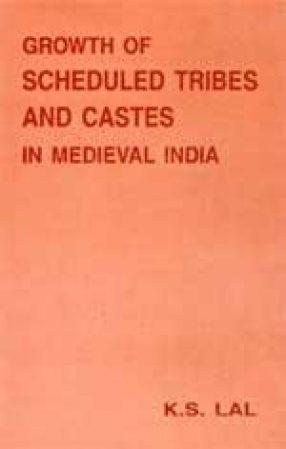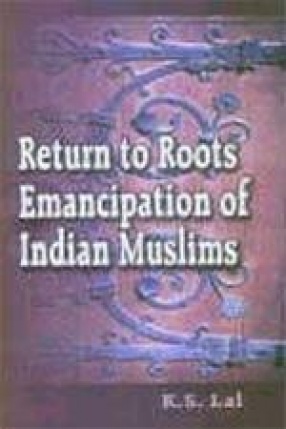The Scheduled Castes, the Scheduled Tribes, the Dalits and the Other Backwards Castes are there in large numbers in present-day India. Many backward classes were there from the pre-historic or very ancient times, many more were added in the medieval period spanning over a thousand years. Their numbers went on growing because of the conflicts of the times arising out of the policies of Muslim invaders and rulers. Contrary to modern-day make-believe, there is no evidence to show that the lower classes suffered from the tyranny of the Hindu upper classes in the medieval period. If it were true that the backward classes were so terribly oppressed by the Brahmanas, we would expect them to take some kind of revenge by making common cause with the Muslim persecutors of the Brahmanas. But exactly opposite is the case. Throughout the medieval period, the lower castes fought shoulder to shoulder with the upper castes and against the foreign invaders and tyrannical rulers. Muslim invaders did not come as friends of the Dalits. Muslim rulers did not treat the low castes any better than they treated the high castes. Hindus suffered repeated defeats on the battlefield because due to a weak state system, their armies were ill-organised and ill-equipped as compared to the Muslim state system which was highly militarized and geared to total war. Hindus would have been wiped out if their social system had been as weak as their state system. So well coalesced was the Hindu social structure that it not only saved India from the fate of countries like Iran, Iraq, Syria and Egypt when they confronted the Islamic onslaught, but did not rest content till it had supplanted the Muslim political power in the land even thought it took a thousand years to do so. As we put the record straight, we find that the small and scattered class of trained and traditional Hindu warriors, mostly Rajputs, stood exhausted by the time of the Mughal invasion, having fought the earlier invaders at every step for well-nigh centuries – from the middle of the seventh to the end of the fifteenth. The leadership of Hindu resistance to Muslim rule thereafter was provided by what are termed the Backward Castes and the Dalits in present-day India. These classes had fought earlier under the leadership of Rajput Rajas and Zamindars. Now onwards they took up the leadership on themselves, and battled with the Mughal regime till the latter stood shattered by the middle of the eighteenth century. It is a different story that in the process the Backward Castes and the Dalits suffered grievously and found themselves in a bad shape by the time the Islamic nightmare was over. That story has yet to be put together from indigenous annals which historians have neglected so far. This study is only a beginning, based for the most part on medieval Muslim chronicles.
Growth of Scheduled Tribes and Castes in Medieval India
by K.S. Lal
$8.10
$9.00
In stock
Free & Quick Delivery Worldwide
All orders amounting to US$ 50 or more qualify for Free Delivery Worldwide. For orders less than US$ 50, we offer Standard Delivery at $14 per book.
ABOUT THE AUTHOR K.S. Lal
Professor Kishori Saran Lal (b. 1920) took his doctorate in Medieval Indian History from the University of Allahabad in 1945. Starting as a lecturer in the same University, he served in the Madhya Pradesh Education Service from 1945 to 1963 and taught at Government Colleges in Nagpur, Jabalpur and Bhopal. He was Reader in the University of Delhi for ten years (1963-73) and, for the next ten years, Professor and Head of the Department of History in the University of Jodhpur (1973-79) and the University of Hyderabad (1979-83). He has participated in many seminars and conferences, national and international, in India and abroad. In Madhya Pradesh, he was Secretary of the Madhya Pradesh Itihasa Parishad and Convener of the Regional Records Survey Committee. He presided over the Medieval History Section of the Indian History Congress in 1958, Punjab History Congress in 1975, Rajasthan History Congress in 1978, and Indian History and Culture Society in 1984. In 1977 he chaired a session at the Seventh International Conference of the Association of Historians of Asia, held in Bangkok. He has published a number of articles and monographs on Medieval Indian History. All his books have met a world-wide acclaim; they have been noticed in learned journals in London, Leiden, Chicago, Leipzig, Rome and other centres of learning.
reviews
0 in total
Review by Anonymous
Be the first to review “Growth of Scheduled Tribes and Castes in Medieval India” Cancel reply
You must be logged in to post a review.
Bibliographic information
Title
Growth of Scheduled Tribes and Castes in Medieval India
Author
Edition
1st ed.
Publisher
ISBN
8186471030
Length
xii+183p., Bibliography; Index; 23cm.
Subjects
more by K.S. Lal see more
similar bookssee more
Mentally Retarded Childredn and Their Families: Challenges Ahead
This book examines problems ...
$5.40
$6.00








There are no reviews yet.